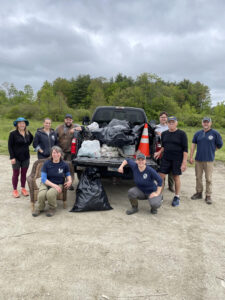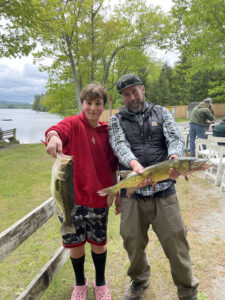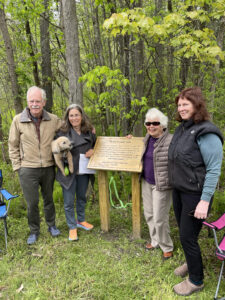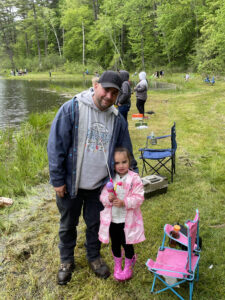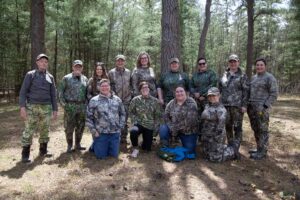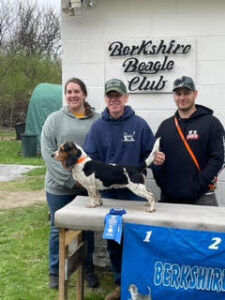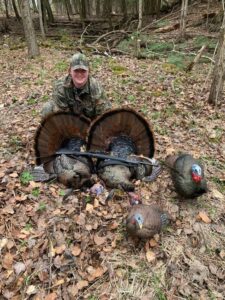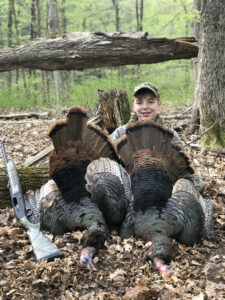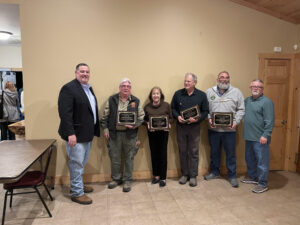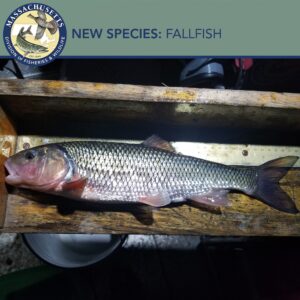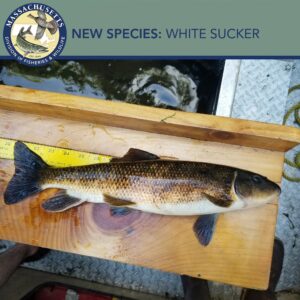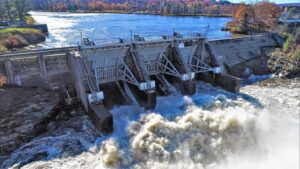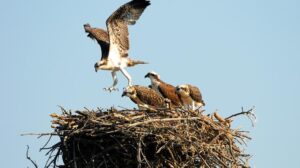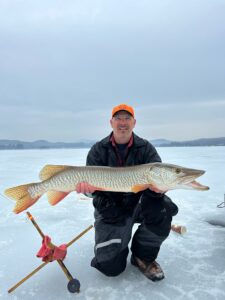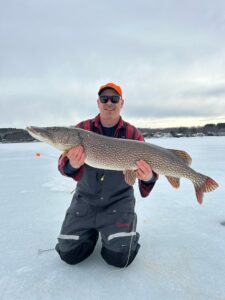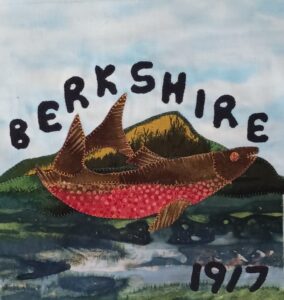For the past four years, MassWildlife has been conducting extensive mark-recapture electrofishing surveys on the Deerfield River to assess the brown trout population. The surveys were focused on the upper section of the river from the Fife Brook Dam to the Route 2 bridge crossing in Charlemont. Results from this work show that over 80% of the brown trout in this section of the Deerfield River are wild. These wild trout were born in the Deerfield or a nearby tributary, not stocked as adults from the hatchery. Based on these findings, MassWildlife has decided that brown trout stocking is no longer necessary in this section of the river since there are many wild fish present.
“Fishing in the Deerfield River is better than ever, and anglers will not notice much of a change from the stocking adjustments,” says Adam Kautza, MassWildlife’s Coldwater Fishery Resource Project Leader. “We will continue to stock rainbow trout in this section of the river. Also, the typical allotment of hatchery-raised brown trout usually stocked upstream of the Route 2 bridge will still be stocked further downstream.” The combination of stocked trout and wild brown trout along with two catch-and-release only areas make the Deerfield a premier destination for all kinds of anglers.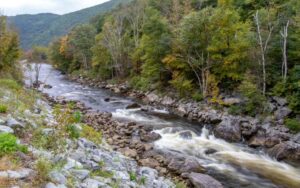
Consistent with the last four years of the survey, MassWildlife biologists will continue to clip the adipose fin of all hatchery-raised brown trout released into the lower section of the Deerfield. “This will enable us to continue monitoring this area and we will know if any hatchery trout make the trip upstream,” says Kautza. “We will continue to monitor the trout population and reassess as needed.”
This survey, along with other fisheries research, allows MassWildlife to manage fish populations more effectively and to provide a variety of fishing opportunities to the public. This project was made possible by ongoing support from the Deerfield River Watershed Chapter of Trout Unlimited and the Greater Boston Chapter of Trout Unlimited. These groups were instrumental in getting this project started and provided physical and financial assistance along the way. “We commend MassWildlife for taking this huge step toward protecting and expanding the wild brown trout population in the upper Deerfield,” says Eric Halloran, president of the Deerfield River Watershed Chapter of Trout Unlimited. “We have known for years that this part of the Deerfield has a significant population of wild brown trout. We hope that through our working relationship with MassWildlife the wild trout population in the Deerfield Watershed will continue to expand.”
Proposed change in goose hunting season
A couple of months ago, it was mentioned in this column that certain waterfowl regulation changes were going to be recommended at a public hearing on April 26. One of the proposed changes would have affected the goose hunters by listing the Berkshire Late Goose season from December 15 to January 30. However; based upon the minutes of the April 2023 Fish & Game Board, they approved a different proposed season which would run from January 1 through February 15.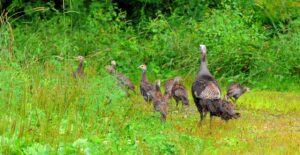
In response to my inquiry for reasons for the change, MassWildlife answered that they did so in response to public comments from hunters, both written and in person at the hearing, Hunters commented that the February portion of the season provides an important opportunity to hunt at a time, and in places, where there is little other activity or conflict with other users. Basically, the Board approved the dates that they felt gave the best opportunity for Berkshire goose hunters.
Ice fishermen expect cold temperatures at that time of year. They need plenty of ice for safety reasons. To counter the cold, they can walk around, chase the tip-ups, cook some warm grub on a hibachi, socialize with other ice fishermen, etc.
But hunkering down and staying still in a small goose blind in February? No, no, not for me.
Pittsfield Sportsmen’s Club youth fishing event
The PSC is sponsoring a kid’s fishing event at Reynolds Pond in Cheshire on Saturday June 17 from 9:00 am to 1:00 pm. It is for kids 12 and under and their parents don’t have to be club members.
There will be snacks for the kids and 5 prizes for kids who catch a tagged trout.
For more information, contact Sandra and Ed Bushey at (413) 443-9371.
Mass Firearm Law Seminar
The Lenox Sportsmen’s Club (LSC) is hosting an educational seminar for both License to Carry Firearms (LTC) holders and non-holders. The Massachusetts Firearm Law Seminar is being held Tuesday, June 13 from 6:00 pm to 9:00 am at the Lenox Sportsmen’s Club, 258 New Lenox Road, Lenox, MA.
Taught by Jon Green, Director of Education & Training for the Massachusetts Gun Owners Action League (GOAL), this 3-hour long seminar reviews and explains both state and federal laws and regulations in simple-to-understand language. The seminar will clarify applicable Massachusetts General Laws (MGL) and Code of Massachusetts Regulations (CMR) regarding;
- Firearm definitions
- Firearm purchase and sale
- Proper and legal firearm and ammunition possession, transport, and storage
- Record-keeping requirements
- Recommended best practices for firearm owners
The cost is $15.00 per person for Lenox Sportsmen’s Club members and their guests and $20.00 for non-members.
Light snacks and soft drinks will be provided. Every attendee will receive a complimentary copy of the Massachusetts Gun Owners Action League firearms law booklet. A License to Carry Firearms (LTC) is not required to attend this seminar.
Pre-Registration is required for this event. People can register on the LSC website.
Hunter education course
Basic hunter education is mandatory for all first-time adult hunters. The Lenox Sportsmen’s Club has scheduled a Hunter Education course at its clubhouse with MassWildlife on August 20. These classes fill up quickly, so if you are interested in taking it, call MassWildlife at (508) 389-7830.
Summer wild turkey survey
Help MassWildlife with its annual summer wild turkey count. Every year from June 1 to August 31, wild turkey reports from the public help their biologists determine productivity, compare long-term reproductive success, and estimate fall harvest potential. Reports are welcome from all regions of Massachusetts, from the most rural communities to more densely-populated areas. The summer wild turkey survey is a fun way for people to connect with nature while contributing valuable data to MassWildlife biologists.
You are encouraged to report wild turkey sightings in your area. Contribute to the annual wild turkey survey by reporting observations of hens (female turkeys), poults (newly-hatched turkeys), jakes (juvenile males), and toms (adult males). Click onto the MassWildlife web page to learn how to tell the difference between male and female turkeys.
Turkey sightings can now be submitted online using a form which can be downloaded. The form has been updated for the 2023 to include a map that allows collection of more accurate location information. Users have the option to zoom to their location on the map or type in an address.
Carp Palooza
This year’s Carp Palooza event will take place on Onota Lake in Pittsfield on June 24. There will be cash prizes for 1st, 2nd and 3rd place, pending the number of entries. Sign-up will take place at the boat ramp between 1:00 and 3:00 pm. Fishing ends at 12:00 am.
Two person teams, $50 per team. Awards will be given for the best combined weight, 2 carp. Lunker Pool optional at $20 per team. Championship belts will be awarded to the first-place team. There will also be a 50/50 raffle.
For information on the event, contact Joshua Christman at (413) 770-7111.
A note from the Environmental Police
According to Lieutenant Tara Carlow of the Massachusetts Environmental Police, officers are patrolling by boat and ATV for violations as well as increasing their presence in the DCR parks as their campgrounds and day use areas become busier. They can always reach out to us for violations or to chat.
Recently they were out with the trout stocking trucks on a couple of occasions and one officer was at the youth stocking event which was recently held at Onota Lake.
So, boaters and anglers take note.

